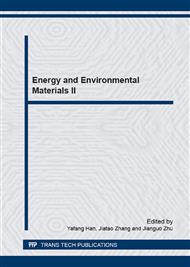p.298
p.303
p.313
p.319
p.325
p.333
p.338
p.345
p.351
Microstructure and Properties of X100 High Strength Pipeline Steel
Abstract:
In order to study the effect of welding process on the microstructure and properties of weld joint of X100 pipeline steel, GMAW was used to prepare the weld joint with low-carbon high manganese-molybdenum-nickel flux cored welding wire. SEM and XRD were used to analyze the microstructure and phase morphology of HAZ and weld metal. Hydraulic tensile testing machine and impact test machine were used to test the mechanical properties. The experimental results showed that the weld metal and HAZ were composed of bainite, ferrite and M/A, the microstructure was fine and uniform with columnar crystal morphology, and HAZ was quite coarse. Hardness of weld metal was 248HV, which is higher than that of base metal, however, HAZ was softening. The tensile strength of weld joint was 832Mpa, which is about 96% of the base metal. The impact absorbed energy at-20°C of the base metal and weld metal were 291J and 121J respectively, exhibiting excellent strength and toughness.
Info:
Periodical:
Pages:
325-332
Citation:
Online since:
March 2015
Authors:
Price:
Сopyright:
© 2015 Trans Tech Publications Ltd. All Rights Reserved
Share:
Citation:


